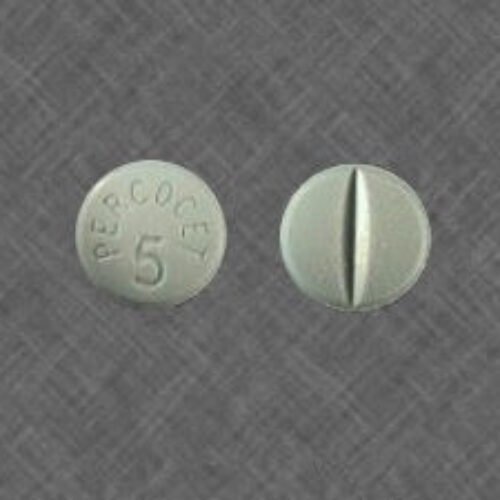Oxycontin OP 10mg
$270.00 – $614.00
Compare+1 (862) 505-1407 Start Live Chat
Description
What is OxyContin OP 10mg?
OxyContin OP 10mg is a prescription medication primarily used for the management of severe pain that requires continuous, long-term opioid treatment. The active ingredient in OxyContin is oxycodone, a powerful opioid analgesic that works by altering the way the brain and nervous system respond to pain. Unlike immediate-release formulations of oxycodone, OxyContin is specifically designed as an extended-release medication, which allows for a gradual release of the drug into the bloodstream over a specified duration, ensuring more stable pain control.
The formulation of OxyContin OP 10mg is designed to provide relief for patients who experience chronic pain due to conditions such as cancer, arthritis, or severe back pain. This extended-release characteristic means that patients typically may take OxyContin every 12 hours, as opposed to the immediate-release oxycodone, which may require more frequent dosing. This feature of OxyContin helps improve patient compliance and minimizes the peaks and troughs often associated with immediate-release medications, thereby providing a more consistent level of pain relief throughout the day.
In addition to its pain management capabilities, OxyContin OP 10mg has specific dosage characteristics that set it apart from other oxycodone formulations. The “OP” designation indicates that this formulation contains an “oral controlled-release” mechanism, aimed at preventing misuse and improving safety. This means that OxyContin is designed to be more difficult to crush or dissolve, significantly lowering the potential for abuse. As a result, OxyContin OP 10mg plays a crucial role in the treatment of individuals who require effective and sustained analgesia while also helping to mitigate the risks associated with opioid misuse.
Medical Uses and Benefits
OxyContin OP 10mg, a potent opioid analgesic, is primarily prescribed for the management of moderate to severe pain. It is especially effective for individuals suffering from chronic pain conditions, post-surgical pain, and pain associated with cancer. Chronic pain, which may result from various medical conditions such as arthritis or fibromyalgia, often requires a long-term treatment approach to ensure manageable pain levels and an improved quality of life for patients. OxyContin’s unique formulation allows for extended-release dosing, making it suitable for patients requiring consistent pain control throughout the day.
One of the key benefits of OxyContin OP 10mg is its extended-release mechanism. This allows the medication to be released slowly into the bloodstream, providing sustained relief over a 12-hour period. Such a feature is particularly beneficial for patients who cannot tolerate frequent dosing, ensuring they experience a more stable pain management regimen and reducing the occurrence of peaks and troughs in pain levels. Enhanced patient adherence to a treatment plan can lead to better overall health outcomes.
Moreover, OxyContin has applications in managing acute pain episodes that may happen post-surgery. Following surgical procedures, many patients undergo significant discomfort, and OxyContin can facilitate their recovery by alleviating pain effectively. In the case of cancer patients, OxyContin is often part of a comprehensive pain management strategy aimed at improving their daily functioning and quality of life during the course of treatment.
Ultimately, understanding the medical uses and benefits of OxyContin OP 10mg is crucial for healthcare providers in determining suitable treatment options for patients struggling with significant pain. By employing this medication responsibly, patients can achieve effective pain relief while minimizing the risks associated with opioid use.
Potential Risks and Side Effects
OxyContin OP 10mg, while effective for pain relief, poses several inherent risks and potential side effects that must be considered before usage. One of the primary risks associated with this medication is the potential for addiction. OxyContin belongs to the class of opioids, which are known for their habit-forming properties. Patients, especially those with a history of substance use disorder, may find themselves developing a dependency on the drug due to its euphoric effects.
Additionally, users of OxyContin OP 10mg may experience a variety of side effects, ranging from mild to severe. Common side effects include nausea, constipation, dizziness, and drowsiness. These may not necessarily necessitate medical intervention but can significantly affect daily functioning. More severe side effects can also arise, such as respiratory depression, which can be life-threatening, particularly in the case of overdose. It is imperative for users to be aware of these risks and to take the medication strictly as prescribed by a healthcare professional.
Long-term use of OxyContin can lead to tolerance, where increasing dosages are needed to achieve the same level of pain relief, thereby raising the potential for overdose. Chronic users may also face withdrawal symptoms upon cessation, reinforcing their dependency on the medication. Special considerations must also be made for specific populations, such as the elderly or those with pre-existing health conditions, who may be at heightened risk of adverse effects. These groups may experience increased sensitivity to opioids and may require tailored dosing regimens to mitigate risks. Given the complex profile of OxyContin OP 10mg, a comprehensive discussion with a healthcare provider is crucial before initiating therapy.
Alternatives to OxyContin OP 10mg
For those seeking alternatives to OxyContin OP 10mg for pain management, various medications and therapeutic options are available. It is important to recognize that the choice of alternative treatments should be tailored to individual needs, conditions, and responses to previous treatments. One notable group of alternatives includes other opioid medications, such as hydrocodone, morphine, or tramadol. These options may provide similar pain relief but come with their own risk profiles and potential for dependence. Consulting a healthcare provider is crucial in determining a suitable opioid alternative, especially for patients with previous opioid use or side effects.
In addition to opioid alternatives, several non-opioid medications are effective for managing pain. Non-steroidal anti-inflammatory drugs (NSAIDs), such as ibuprofen and naproxen, can help alleviate mild to moderate pain. Acetaminophen is another over-the-counter option that is often utilized, although it may not be suitable for all types of pain. Antidepressants, particularly some tricyclics and SNRIs, have also been shown to be effective in treating certain types of chronic pain, particularly neuropathic pain.
Beyond medication, non-pharmacological interventions can significantly aid in pain management. Physical therapy is a common alternative that helps improve mobility and strength, targeting pain at its source. Techniques such as acupuncture and chiropractic care offer integrative approaches to manage pain through manipulation and stimulation of the body’s natural healing processes. Furthermore, lifestyle modifications, including regular exercise, healthy eating, and stress management techniques like meditation, can profoundly impact overall pain levels and improve quality of life.
By exploring these alternatives to OxyContin OP 10mg, patients can work with their healthcare providers to develop comprehensive pain management strategies that are safe and effective. The ultimate goal is to achieve relief while minimizing side effects and risks associated with prolonged opioid use.
Navigating Prescription and Usage Guidelines
OxyContin OP 10mg is a powerful opioid analgesic that requires careful consideration when prescribed. In order to ensure safe usage, it is essential for patients to engage in open discussions with their healthcare providers. Physicians typically assess the individual’s medical history, current health conditions, and potential risks prior to prescribing OxyContin. It is crucial for patients to be transparent about any previous substance use or other medications they are taking, as these factors can significantly influence the efficacy and safety of OxyContin.
Moreover, adhering to the prescribed dosage is vital. OxyContin is designed for continuous pain relief, and taking it in accordance with the instructions provided by a healthcare professional minimizes the risk of dependence and overdose. Altering the dosage without guidance or consuming the medication more frequently than indicated can lead to serious health complications. Patients should also understand the importance of using the medication for its intended purpose, primarily in the treatment of chronic pain, as misuse can lead to detrimental outcomes.
Recognizing signs of misuse is another critical aspect of safely using OxyContin OP 10mg. Individuals should be aware of symptoms such as increased tolerance, cravings for the medication, or taking it for non-medical reasons. If any of these signs develop, it is imperative to consult a healthcare professional immediately. Additionally, understanding the regulatory framework surrounding opioid prescriptions is essential to navigate the complexities of obtaining and using OxyContin responsibly. This includes being aware of state laws and the potential need for monitoring through prescription drug monitoring programs.
Through a combination of informed patient participation and adherence to guidelines, the risks associated with OxyContin OP 10mg can be significantly mitigated. As pain management remains a vital aspect of healthcare, ensuring the responsible use of opioids is imperative for both patients and healthcare providers alike.
Additional information
| Pills | 120, 180, 240, 300, 60 |
|---|
6 reviews for Oxycontin OP 10mg








Tyler (verified owner) –
Good quality.
Owen (verified owner) –
Very well worth the money.
Edward (verified owner) –
Good quality.
Edward (verified owner) –
Good quality.
Daniel (verified owner) –
Very fast delivery.
Aadarsh (verified owner) –
Good quality.